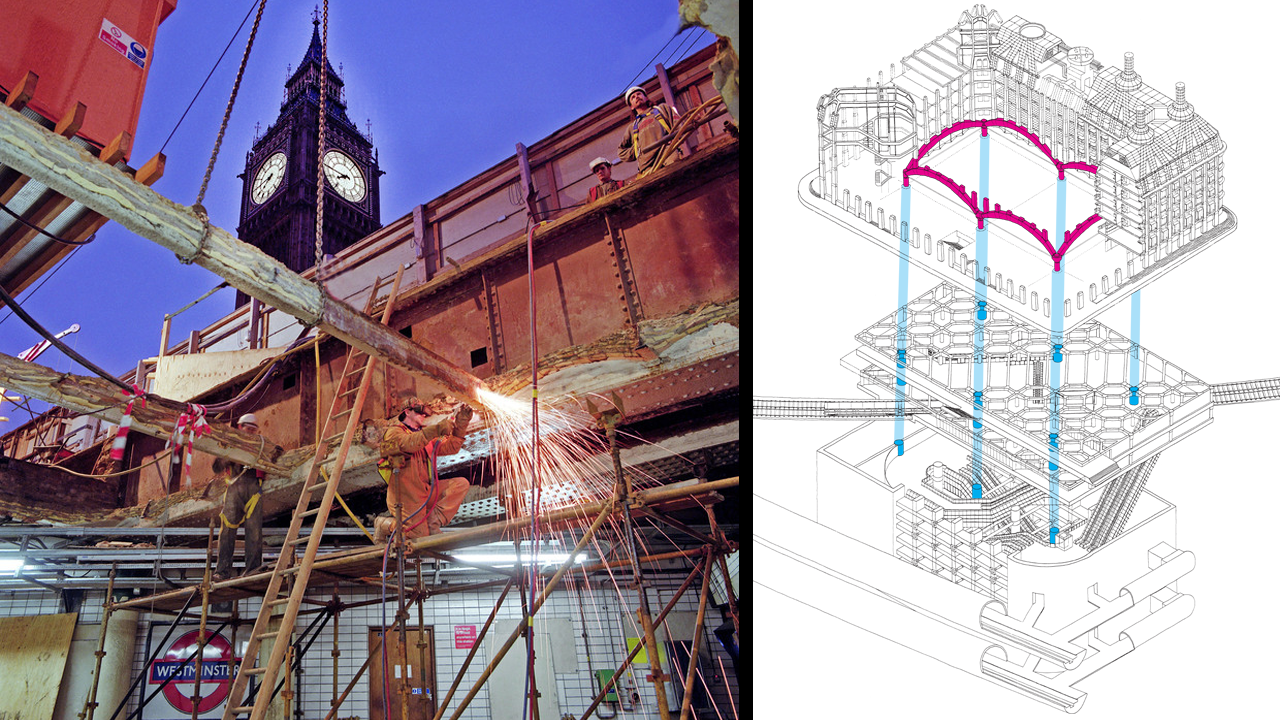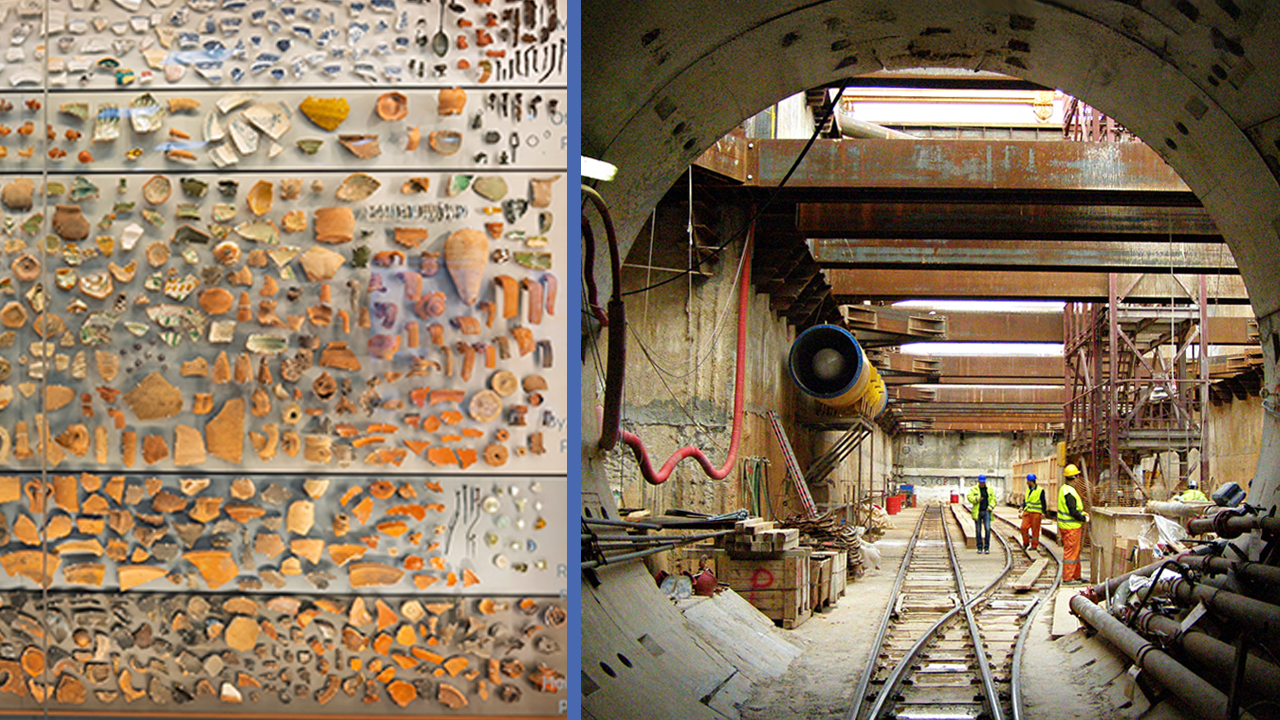The $64M Race to Save the Eiffel Tower
- Youtube Views 1,848,717 VIDEO VIEWS
Video narrated and hosted by Fred Mills.
THE EIFFEL TOWER is in danger.
The landmark has survived an occupation, two world wars, and the prospect of demolition back in 1903. But all of those threats pale in comparison to the tower’s greatest enemy: rust.
For more than a century this iconic monument has been fighting an uphill battle against the wind and rain of Paris, could it now finally be losing?
This is the $64M fight to save the Eiffel Tower.
Only supposed to stand 20 years
The Eiffel Tower was never supposed to stand for this long. It was meant as a temporary monument for the 1889 World’s Fair. To rise over Paris for just 20 years before being torn down.
Now, 135 years later, it is not only still standing but has cemented itself as one of the most beloved and iconic structures in the world.
But the tower is starting to show its age.

Above: The tower had to finish restoration works before the Olympics.
Ideally, the tower was meant to be repainted every seven years, but the last restoration effort was delayed, thanks to the pandemic.
Now the tower is in the middle of a $64M repaint to make it presentable for the 2024 Paris Olympics.
However, some experts have criticised this repaint as being little more than a cosmetic touch up, which doesn’t address the advanced state of rust the tower is now in.
In a confidential report leaked to French magazine Marianne one unnamed manager said if Gustave Eiffel, the engineer behind the tower, visited it today he would have a heart attack.
Building the world's tallest structure
Gustave Eiffel actually anticipated that rust would become a problem for the Eiffel Tower and he put in plans to cope with this. But first he had to convince Parisians not to demolish it.
It’s the eighties. No, not those eighties. The eighteen eighties.
Paris was set to hold the World’s Fair at the end of the decade and the city needed something spectacular. It was to be the centenary of the French Revolution and Paris wanted to show off the engineering skill of the French people.
Gustave Eiffel won a competition to design a glittering new monument with his proposal for a 1,000 foot tower that was to be, by far, the tallest manmade structure on Earth.
It would handily beat the then current tallest, the Washington Monument. Actually, before that the tallest structures in the world were all churches… and the pyramids.

Above: The tower was far and away the tallest manmade structure on earth.
While Eiffel is now synonymous with the tower that takes his name, he was also one of the greatest engineering minds of the 19th century. Among his many achievements were the Porto viaduct over the river Douro and the Statue of Liberty.
His initial designs for the Eiffel Tower took his engineering concepts to fantastic new heights.
His first challenge was figuring out how to build something that tall that wasn’t also impossibly heavy.
When the Washington Monument was being built it kept sinking into the ground because of the enormous weight or the marble and granite it is made out of.
Eiffel solved this problem by making his tower out of iron, a lightweight but strong material.
It looked, quite literally, like something from a Jules Verne novel. A large pylon with four columns made of lattice work girders that met at the top.
To make it more palatable to the general public architect Stephen Sauvestre was brought on to tidy up the design. He gave us the stonework legs, the arches that linked the columns with the first levels, and the bulb-like crown at the top.
Fighting the wind
As nothing had ever been built this tall before, Eiffel had to take special consideration for the enormous wind pressures the tower would face at varying heights. This is how the tower got its unique shape.
The wind resistance is a really neat feature approach to the design and the analogies with great trees, like great oaks or sequoias, where the trunk gets progressively, broader and broader as it gets to the root system.
The distinctive curves are the product of Eiffel’s mathematical equations to create the most wind resistant form. If the tower had been built as a simple straight line it would have wobbled dangerously back and forth.
This design tricks the wind into travelling downwards. The lattice structure also evenly distributes loads across its framework so that when high winds do hit it remains stable.

Above: The tower's tree-like structure tricks the wind.
Today these equations would be tested out with models and on computers well before the tower was constructed, back then Eiffel only had his theories.
They were gambling two years of work, and a modern equivalency of $37M. The pressure was immense.
Construction began on the first of July, 1887. While the Washington Monument took several decades to build, the Eiffel Tower took just 22 months.
But the Eiffel Tower wasn’t built where it is today. Every part of it was made in Eiffel’s factories on the outskirts of Paris. All 18,000 pieces of the tower were then taken to the Champ de Mars and assembled to an accuracy of a tenth of a millimetre. It was like a gigantic LEGO set.
At any one point in time there were up to 300 workers on site using small steam cranes and scaffolding to build the tower. More than 2.5M rivets would hold it together.
On December 7, 1887 all four of the girders met in the middle and began their vertical ascent upwards, racing to the sky.
Finally, it was given four coats of red lead paint. That’s right, the Eiffel Tower once more closely resembled the Golden Gate Bridge than the bronze hue it is today.
The most hated icon in Paris
The tallest structure on earth and a wonder of the modern world was then complete. And the French hated it.
Parisians are not known for their restraint when it comes to handing out critiques. It is, after all, a French word.
The tower was labelled a “truly tragic street lamp”, a “half-built factory pipe”, and “incomplete, confused and deformed".
To his credit, Gustave Eiffel worked tirelessly to defend his tower. He asked his detractors could there not be beauty within his engineering marvel?

Above: The tower was hated by Parisians as it was rising on the skyline.
The public opinion was, I think, a different story. And that was steadily improving as the tower was growing. And by the time it opened in 1879, had 2 million visitors in the first six months. Now that doesn't suggest it was an unwelcome imposition on the, you know, general Parisians or visitors to the Exposition. So it very, very quickly became a worldwide icon.
The tower was set to be torn down in twenty short years and in 1903 plans for demolition were seriously considered.
In order to save the tower, Eiffel funded several scientific uses for it, these ranged from meteorological observations to wireless telegraphy.
The tower became of particular military interest when they found it could transmit and receive long-distance signals. All of these efforts helped to save the tower. Even to this day it plays a vital role in television and radio broadcasts.
Now, after decades of hard work, all Eiffel could hope was for future generations to take care of his monument as well as he had.
The tower vs. rust
A series of reports over the last few years have turned up some troubling results. One in 2010 urged the operating company for the tower to come up with a completely new maintenance policy.
One in 2014 found cracks and rusting throughout the structure and that only 10% of the new paint was adhering to the tower.
Another in 2016 showed there were 885 faults, including 68 that posed serious risk to its durability.
A third of the tower was set to be stripped and have two new coats applied, but thanks to delays caused by the pandemic and worrying levels of lead in the old paint only 5% of the tower is now being treated.

Above: The tower is undergoing extensive restoration works.
Unfortunately, Experts are warning that this $64M repaint could actually make defects in the existing layer of paint worse, resulting in more corrosion. While the operating company is nervous to close the tower for any extended periods of time.
The Eiffel Tower attracts some 7M visitors and nearly €100M of revenue every year. Unfortunately the operating costs can often exceed that number.
Painting the tower is no easy task and it’s done in much the same way it was 135 years ago. With scaffolding or painters abseiling off the side of the structure. They strip, clean, and apply rust-proofing before a final coat of paint.
While the structure is currently safe, it’s clear that more will need to be done to ensure it will be standing for centuries to come.
The tower is built using puddle iron. In theory this material could last forever, as long as it is maintained and is prevented from rusting.
If this $64M repaint proves to just be a band-aid solution it will be up to future Parisians to ensure the integrity of the monument.
The Eiffel Tower is one of those rare structures that has transcended the rivets and bolts it is made of. It’s more than just an observation tower, or antenna, or a glitzy monument for a long ago exhibition.
It’s one of the most recognisable buildings in the world.
In that way, Gustave Eiffel has ended up having the last laugh against all of his critics.
He was right: there is an astounding and timeless beauty in his engineering.
Video narrated and hosted by Fred Mills. Additional footage and images courtesy of the Dronalist, Paris Archive, Paris Olympics 2024 and SkyscraperPage.
We welcome you sharing our content to inspire others, but please be nice and play by our rules.








